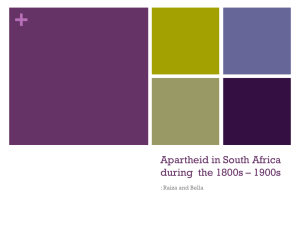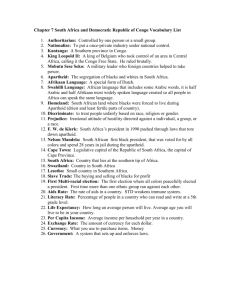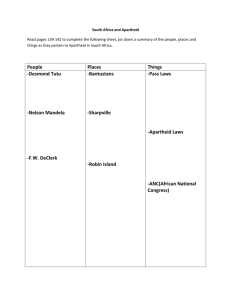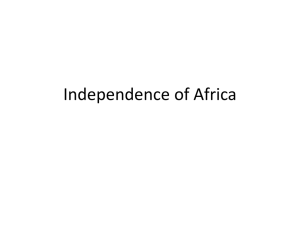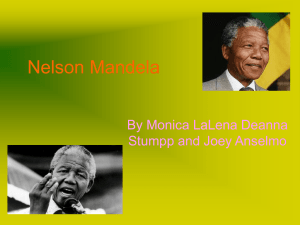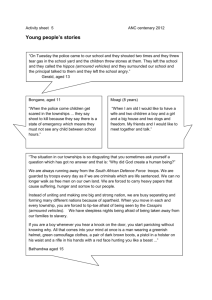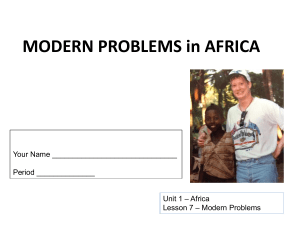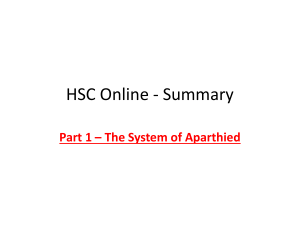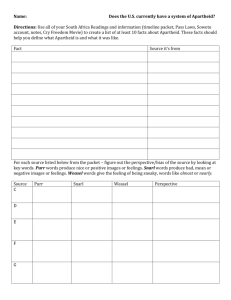Apartheid Laws in South Africa: A Summary
advertisement
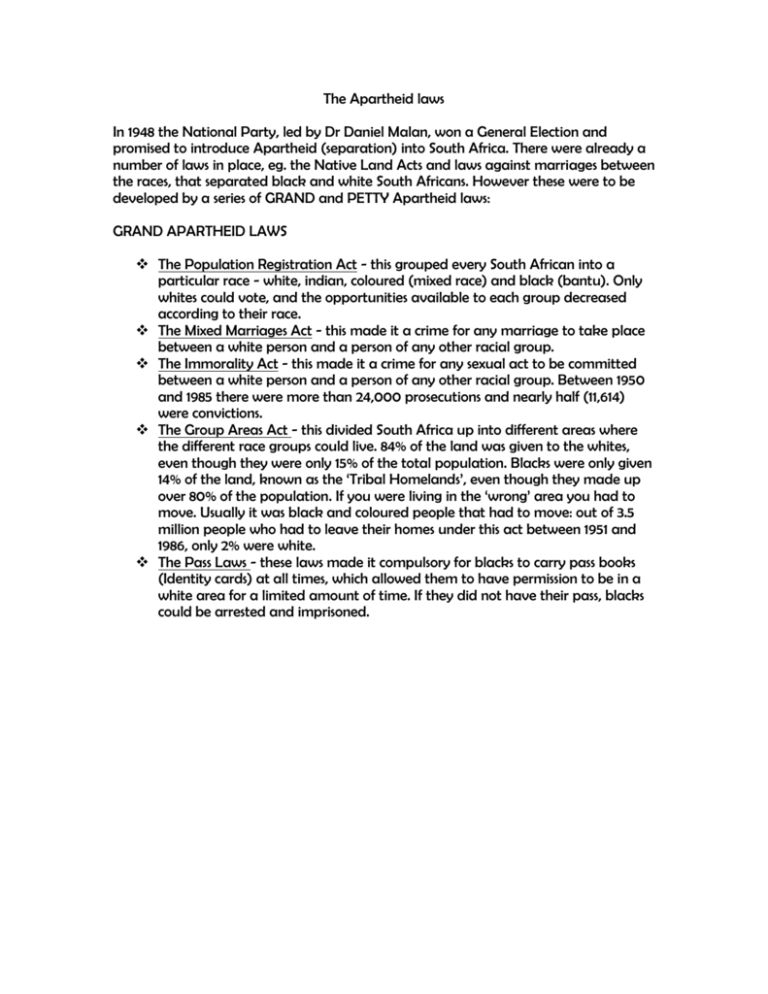
The Apartheid laws In 1948 the National Party, led by Dr Daniel Malan, won a General Election and promised to introduce Apartheid (separation) into South Africa. There were already a number of laws in place, eg. the Native Land Acts and laws against marriages between the races, that separated black and white South Africans. However these were to be developed by a series of GRAND and PETTY Apartheid laws: GRAND APARTHEID LAWS The Population Registration Act - this grouped every South African into a particular race - white, indian, coloured (mixed race) and black (bantu). Only whites could vote, and the opportunities available to each group decreased according to their race. The Mixed Marriages Act - this made it a crime for any marriage to take place between a white person and a person of any other racial group. The Immorality Act - this made it a crime for any sexual act to be committed between a white person and a person of any other racial group. Between 1950 and 1985 there were more than 24,000 prosecutions and nearly half (11,614) were convictions. The Group Areas Act - this divided South Africa up into different areas where the different race groups could live. 84% of the land was given to the whites, even though they were only 15% of the total population. Blacks were only given 14% of the land, known as the ‘Tribal Homelands’, even though they made up over 80% of the population. If you were living in the ‘wrong’ area you had to move. Usually it was black and coloured people that had to move: out of 3.5 million people who had to leave their homes under this act between 1951 and 1986, only 2% were white. The Pass Laws - these laws made it compulsory for blacks to carry pass books (Identity cards) at all times, which allowed them to have permission to be in a white area for a limited amount of time. If they did not have their pass, blacks could be arrested and imprisoned.
